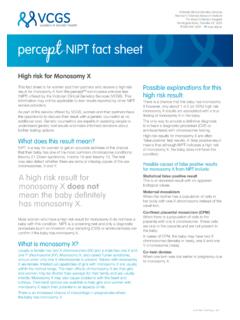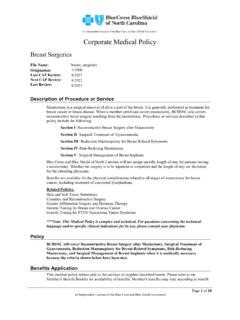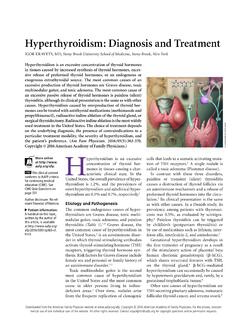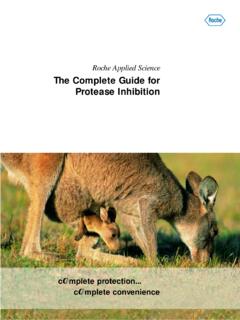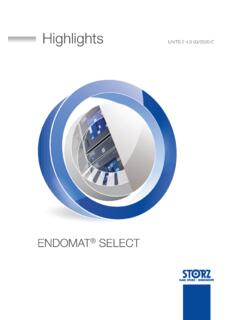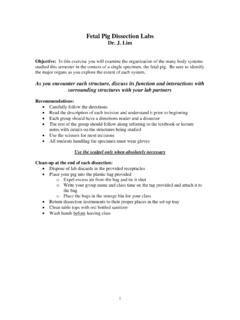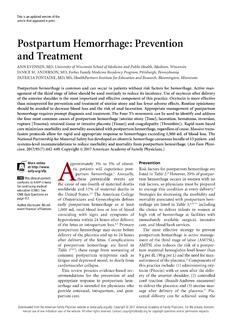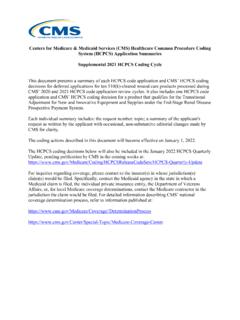Transcription of DRUG NAME: Nivolumab
1 Nivolumab DRUG NAME: Nivolumab SYNONYM(S): COMMON TRADE NAME(S): OPDIVO CLASSIFICATION: miscellaneous Special pediatric considerations are noted when applicable, otherwise adult provisions apply. MECHANISM OF ACTION: Nivolumab is a fully human IgG4 monoclonal antibody known as a programmed cell death 1 (PD-1) immune checkpoint inhibitor. The PD-1 pathway is an immune system checkpoint that may be exploited by tumour cells to escape active T-cell surveillance. By blocking the binding of the PD-1 receptor to the PD-1 and PD- 2 ligands, Nivolumab reactivates tumour-specific cytotoxic T-lymphocytes in the tumour microenvironment and restimulates anti-tumour ,2 PHARMACOKINETICS: Distribution tissue penetration or distribution is not known cross blood brain barrier?
2 No information found volume of distribution3 8L plasma protein binding no information found Metabolism not defined; expected to be degraded into small peptides and amino acids via catabolic pathways similar to endogenous IgG active metabolite(s) no information found inactive metabolite(s) no information found Excretion linear pharmacokinetics in the dose range of mg/kg urine no information found feces no information found terminal half life days clearance mL/h Adapted from standard reference1 unless specified otherwise. USES: Primary uses: Other uses: *Melanoma Lymphoma, Hodgkin s4 *Lung cancer, non small-cell *Renal cell cancer *Head and neck cancer *Health Canada approved indication BC Cancer Agency Cancer Drug Manual Page 1 of 7 Nivolumab Developed: 1 March 2017 Revised: 1 August 2017 Nivolumab SPECIAL PRECAUTIONS: Caution: product contains mg/mL sodium ( mmol/mL); consider sodium content as needed for patients on a controlled sodium diet1 avoid systemic corticosteroids or immunosuppressants prior to starting Nivolumab due to potential interference with the efficacy of Nivolumab .
3 Corticosteroids or immunosuppressants may be used during treatment with Nivolumab in the management of immune-mediated adverse reactions1 Carcinogenicity: no information found Mutagenicity: no information found Fertility: In animal studies, no histopathologic changes were detected during routine examination of male and female reproductive organs; however most tested animals were not sexually Pregnancy: Nivolumab has not been studied in pregnant women. Endogenous IgG4 is known to cross the placental barrier, particularly during the third trimester; therefore, as a human IgG4 antibody, Nivolumab is expected to be transmitted from mother to fetus.
4 Based on its mechanism of action, fetal exposure to Nivolumab may increase the risk of developing immune-mediated disorders or altering the normal immune response. In animal reproductive studies, maternal Nivolumab administration was associated with increases in third trimester fetal loss and increased neonatal mortality. Women of reproductive potential should use effective contraception while on Nivolumab and for at least 5 months after treatment has been ,3,5 Breastfeeding is not recommended due to potential secretion of Nivolumab into breast milk. Human IgG is known to be secreted into breast milk; therefore as a human IgG4 antibody, Nivolumab is expected to do ,3 SIDE EFFECTS: The table includes adverse events that presented during drug treatment but may not necessarily have a causal relationship with the drug.
5 Because clinical trials are conducted under very specific conditions, the adverse event rates observed may not reflect the rates observed in clinical practice. Adverse events are generally included if they were reported in more than 1% of patients in the product monograph or pivotal trials, and/or determined to be clinically ORGAN SITE SIDE EFFECT Clinically important side effects are in bold, italics blood and lymphatic system/ febrile neutropenia anemia (28-37%, severe 2-3%)1,3 leukopenia (11%, severe 1%) lymphopenia (29-48%, severe 6-16%)1,3 neutropenia (15%, severe 1%) thrombocytopenia (11-14%, severe 1%)1,3 endocrine (see paragraph following Side Effects table) hyperthyroidism (1-3%, severe 1%)1,3 hypophysitis (<1%) hypopituitarism (2%) hypothyroidism (4-6%)
6 Eye uveitis (<1%) gastrointestinal (see paragraph following Side Effects table) emetogenic potential: low7 abdominal pain (4-16%, severe 2%)1,3 colitis (17-21%, severe 2%)1,3 constipation (4-24%)1,3 BC Cancer Agency Cancer Drug Manual Page 2 of 7 Nivolumab Developed: 1 March 2017 Revised: 1 August 2017 Nivolumab ORGAN SITE SIDE EFFECT Clinically important side effects are in bold, italics diarrhea (8-21%, severe 1-3%)1,3 nausea (11-29%, severe 2%)1,3 stomatitis (3%) vomiting (5-19%, severe 1%)1,3 general disorders and administration site conditions extravasation hazard: none8 non-cardiac chest pain (13%)3 edema (3-17%, severe 1-2%)1,3 fatigue (26-50%, severe 7%)1,3 pyrexia (3-17%) 1,3 immune system (see paragraph following Side Effects table) dermatologic (1%) endocrinopathy (1-8%)1,9 gastrointestinal (18-21%)9 hepatitis (1%)5,9 infusion related reaction (2-4%).
7 See paragraph following Side Effects table nephritis, renal failure (1-2%)1,9 pulmonary (1-4%)1,9 infections and infestations bronchitis (9%)3 pneumonia (10%, severe 5%)3 upper respiratory tract infection (2-11%)1,3,10 investigations (see paragraph following Side Effects table) alkaline phosphatase increase (14-26%, severe 1-3%)1,3 ALT increase (12-25%, severe 2-3%)1,3 AST increase (16-27%, severe 1-4%)1,3 total bilirubin increase (3-13%, severe 3%)1,3 creatinine increase (10-22%, severe 1%)1,3 weight loss(13%) metabolism and nutrition appetite, decreased (5-35%, severe 3%)1,3 hypercalcemia (12%, severe 1%) hyperglycemia (2%, severe 1%); see paragraph following Side Effects table hyperkalemia (23%, severe 2 %) hypocalcemia (20%) hypokalemia (15%, severe 1%) hypomagnesmia (21%, severe 1%) hyponatremia (35%, 7%) musculoskeletal and connective tissue arthralgia (6-13%) musculoskeletal pain (6-36%, severe 1-6%)1,3 weakness (19%, severe 2%) nervous system headache (1-4%) peripheral neuropathy (3-9%) renal and urinary renal failure (2%, severe 1%).
8 See paragraph following Side Effects table respiratory, thoracic and mediastinal cough (3-32%, severe 2%)1,3 dyspnea (2-38%, severe 9%)1,3 pneumonitis, or interstitial lung disease (2-6%)1,3; sometimes fatal5; see paragraph following Side Effects table BC Cancer Agency Cancer Drug Manual Page 3 of 7 Nivolumab Developed: 1 March 2017 Revised: 1 August 2017 Nivolumab ORGAN SITE SIDE EFFECT Clinically important side effects are in bold, italics skin and subcutaneous tissue alopecia (3%) dry skin (4%) erythema (6%) pruritus (7-17%, severe <1%) rash (11-21%, severe 1%)1,3 urticaria (1%) vitiligo (11%) Adapted from standard reference1 unless specified otherwise.
9 Immune-mediated adverse events are a spectrum of side effects that arise from general immunologic enhancement caused by Nivolumab . Adverse events can occur any time during treatment or months after discontinuation of therapy. Early identification of adverse events and prompt intervention is crucial for the safe use of Nivolumab . Although symptoms may be nonspecific, if not recognized and treated early, they can be severe or fatal. Endocrinopathies, diarrhea/colitis, liver enzyme test elevations, nephritis, pneumonitis, and rash should be considered immune-mediated until another etiology can be confirmed. Strongly advise patients to report any symptoms promptly and to avoid self-treatment without medical advice.
10 Based on the severity of the reaction, symptom management may include temporarily withholding Nivolumab and/or administration of corticosteroids, with or without additional immunosuppressive medication. Permanent discontinuation of Nivolumab should be considered for life threatening or recurrent serious adverse events. When prolonged corticosteroid treatment is necessary for management of side effects, corticosteroids should be tapered over at least one month following resolution of symptoms to grade 1 or less, as rapid tapering may lead to relapse or worsening of the symptoms. Antibiotic prophylaxis may be necessary to prevent opportunistic infections ( , oral trimethoprim/sulfamethoxaxole for the prevention of Pneumocystis jiroveci pneumonia).










